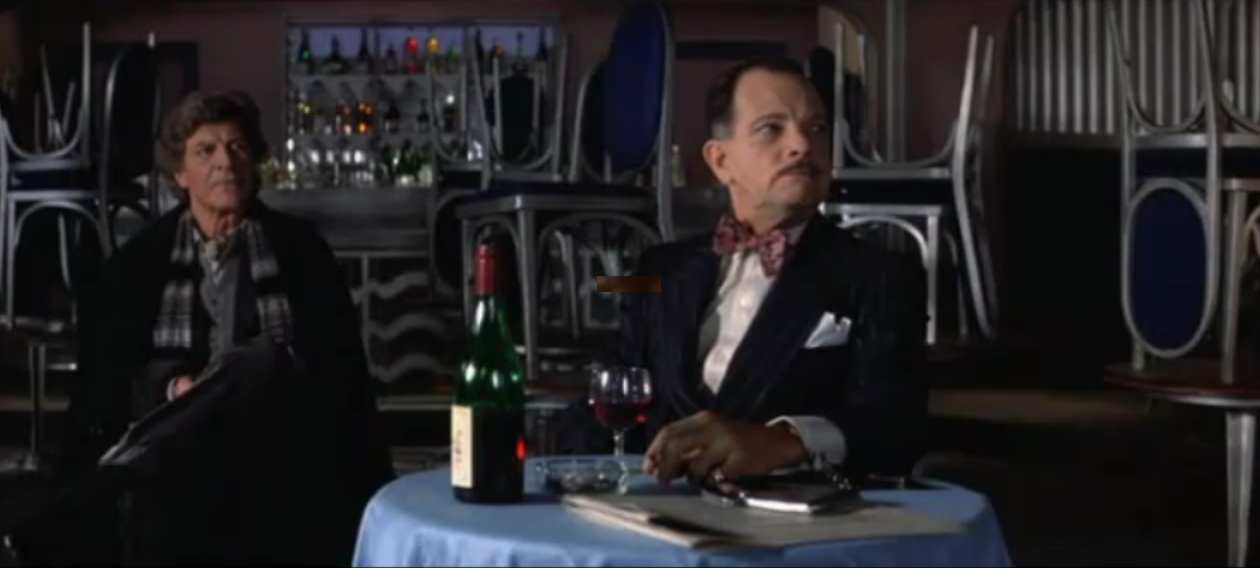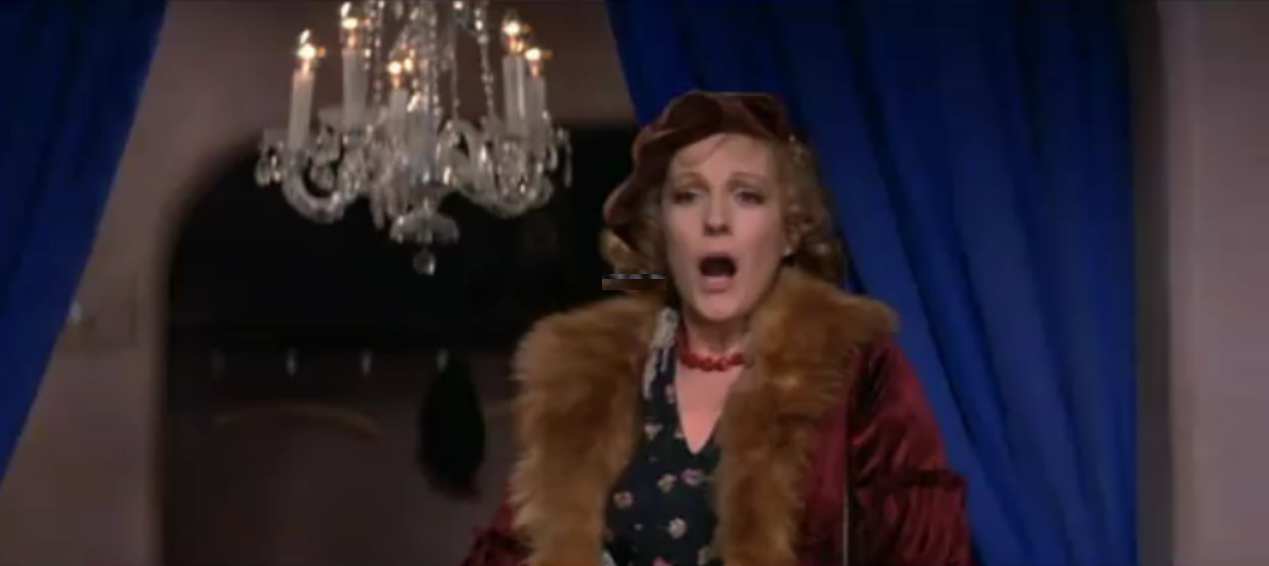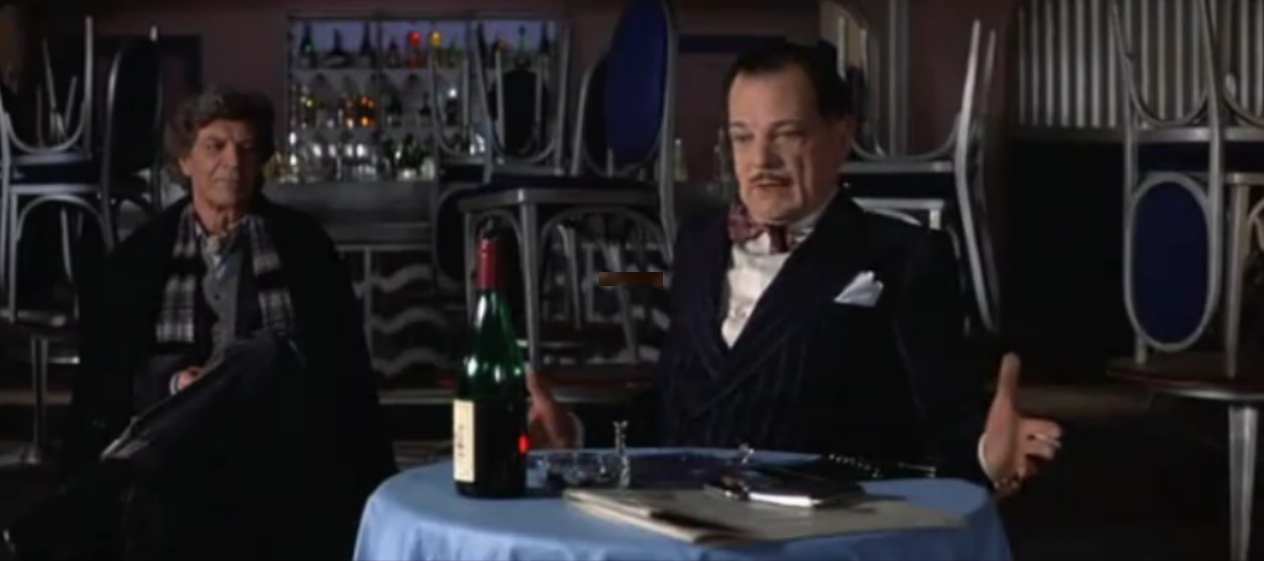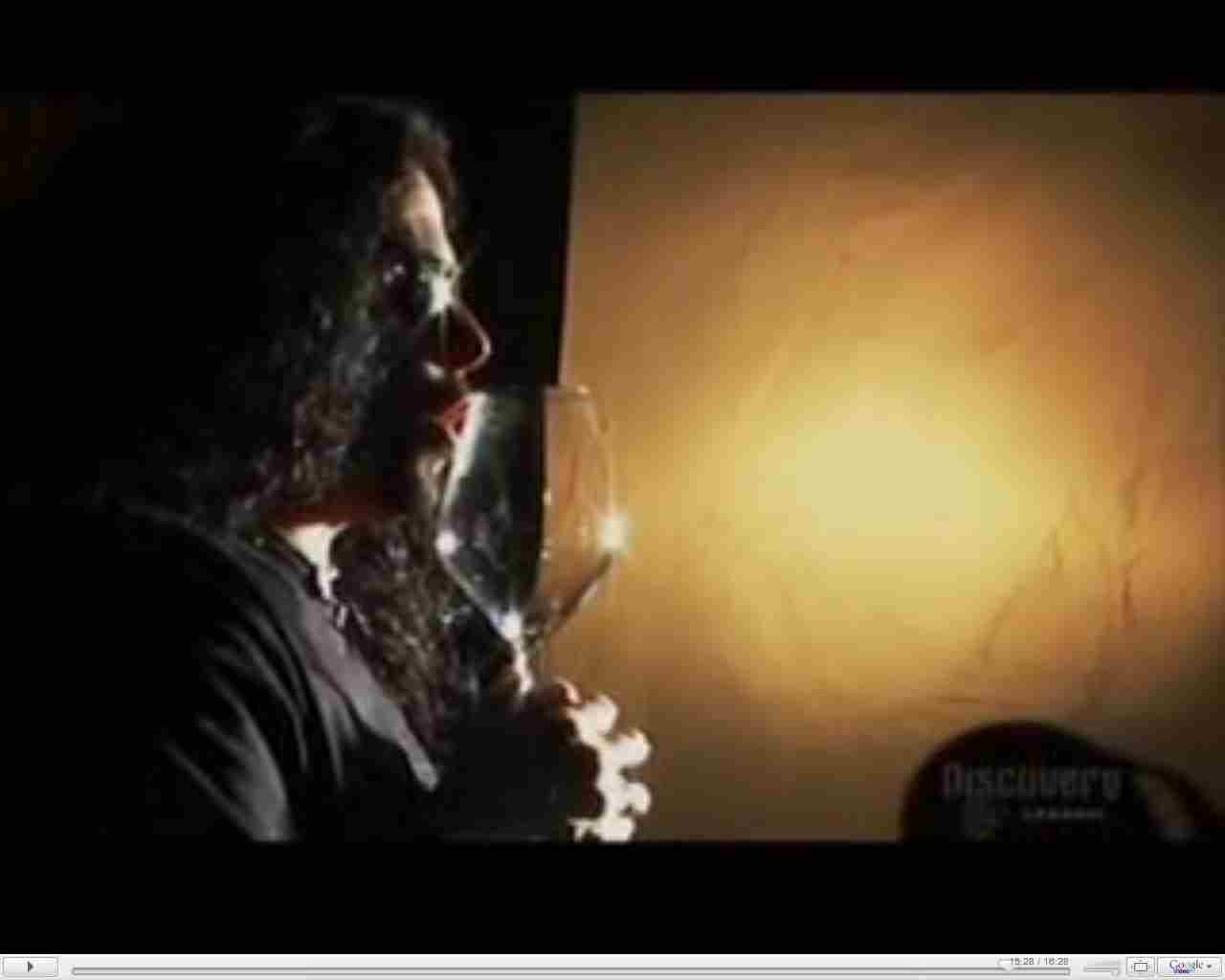 |
Old Bull Lee A Voice From the Reality-based Community Notes from a Study of Things Themselves |
 |
Can a Woman Break a Wine Glass With Only Her Voice?
Victor/Victoria, the 1982 Blake Edwards film, is well-known as the story of a woman pretending to be a man pretending to be a woman. The woman Victoria is played by Julie Andrews. At the beginning of the film she's a starving singer in depression-era Paris, desperate to get a paying gig. So she auditions for an unappreciative Monsieur Labisse.
Victoria: As you can see, I have a legitimate voice.
Monsieur Labisse: Yes, well I'm looking for something a little more...illegitimate.

Victoria: I'm sure with a little practice...
Monsieur Labisse: Lady, that is like a nun saying, with a little practice, she could become a streetwalker.
Victoria: [sighs] It has to come naturally.
Monsieur Labisse: In some professions practice is a minor consideration. So, take my advice and stick to Carmen.
Victoria: I am a coloratura, Mr. Labisse, not a mezzo.
Monsieur Labisse: Well, whatever you are, Andre Cassell should never have sent you here.
Victoria: He didn't.
Monsieur Labisse: You told me he was your agent.
Victoria: I lied. [Turns and walks away, then turns back around, facing Mr. Labisse.] In spite of what you think, Mr. Labisse, there are some professions where practice DOES make perfect.
[Sings]

[Wine glass shatters]

Monsieur Labisse: What the hell was THAT?
Toddy: B-flat.
Can a human being really break a wine glass with only his (or her) voice? This question has been taken on directly by the Discovery Channel's Mythbusters team. Their report is online as a Youtube video.
The Mythbusters investigators begin their experiments with a crystal wine glass. When they run a wet finger around its rim, the glass emits an audible tone, which is its resonant frequency. They measure that frequency with a spectrum analyzer and find it to be 562 Hz. (C#5 is 554.37 Hz.) They reproduce that tone with a signal generator, amplify it and play it into a speaker with a wine glass a few inches from the vibrating speaker cone. At first the glass vibrates but doesn't break. When the sound energy is focused on the glass using a baffle, the glass shatters. In summary, they demonstrate that amplified sound at the resonant tone can break a glass.
But can a human being break the glass without amplification? To answer that question they engage the services of Jaime Vendera, a singer and vocal coach. He informs the Mythbusters that the now disbanded heavy metal group Nitro would break glasses with only their voices as sort of a warm up for live performances.
Vendera, after some experimentation, successfully breaks a glass when he holds it (by the stem) close to his mouth, as seen below.

Glass breaking at a live musical performance?
Imagine this scene. A singer with a powerful voice is performing in a nightclub where patrons are at tables as close as 15 feet from the stage. Wine glasses, most of them empty, are sitting on tables around the room. The singer hits a note of the same frequency as the resonant tone of the glasses. A dozen glasses shatter simultaneously.
Could this happen?
To answer this question, consider what's required to shatter the wine glass. The acoustic power incident on the glass must be concentrated at the resonant frequency. The energy (power times time) transmitted to the glass must be sufficient to vibrate the glass such that it breaks.
Sound power is measured in decibels (dB). The Wikipedia entry for Jaime Vendera states that
During the filming of MythBusters, Vendera's voice was measured at 117 dB at 48", translating into 120 dB at one meter as recorded by Dr. Roger Schwenke of Meyer Sound Laboratories.
The voice power incident on the glass decreases inversely with the square of the distance from the source. So the power at one tenth the distance (4.8 inches) would be 100 times greater, or 20 dB more, than at 48 inches. Likewise, the incident power on the glass at a distance of 480 inches (40 feet) would be 1/100th, or 20 db less, than what it was at 4 feet.
Stated another way, the Mythbusters demonstration showed that a voice power of 137 dB is required to break a glass 4.8 inches away from a singer's vocal cords. To break a glass 48 inches away, the singer would need to emit a hundred times (20 dB) more power, or 157 dB. To break a glass 40 feet (480 inches) away, he would need ten thousand times more power, or 177 dB.
To break the glass at a distance of 15 feet (180 inches) the singer would need to produce a sound of 137 dB + 20*log(180/4.8) dB, or 168 dB. This is probably beyond the capability of any human being.
The nightclub owner should be reassured: his stemware is safe.